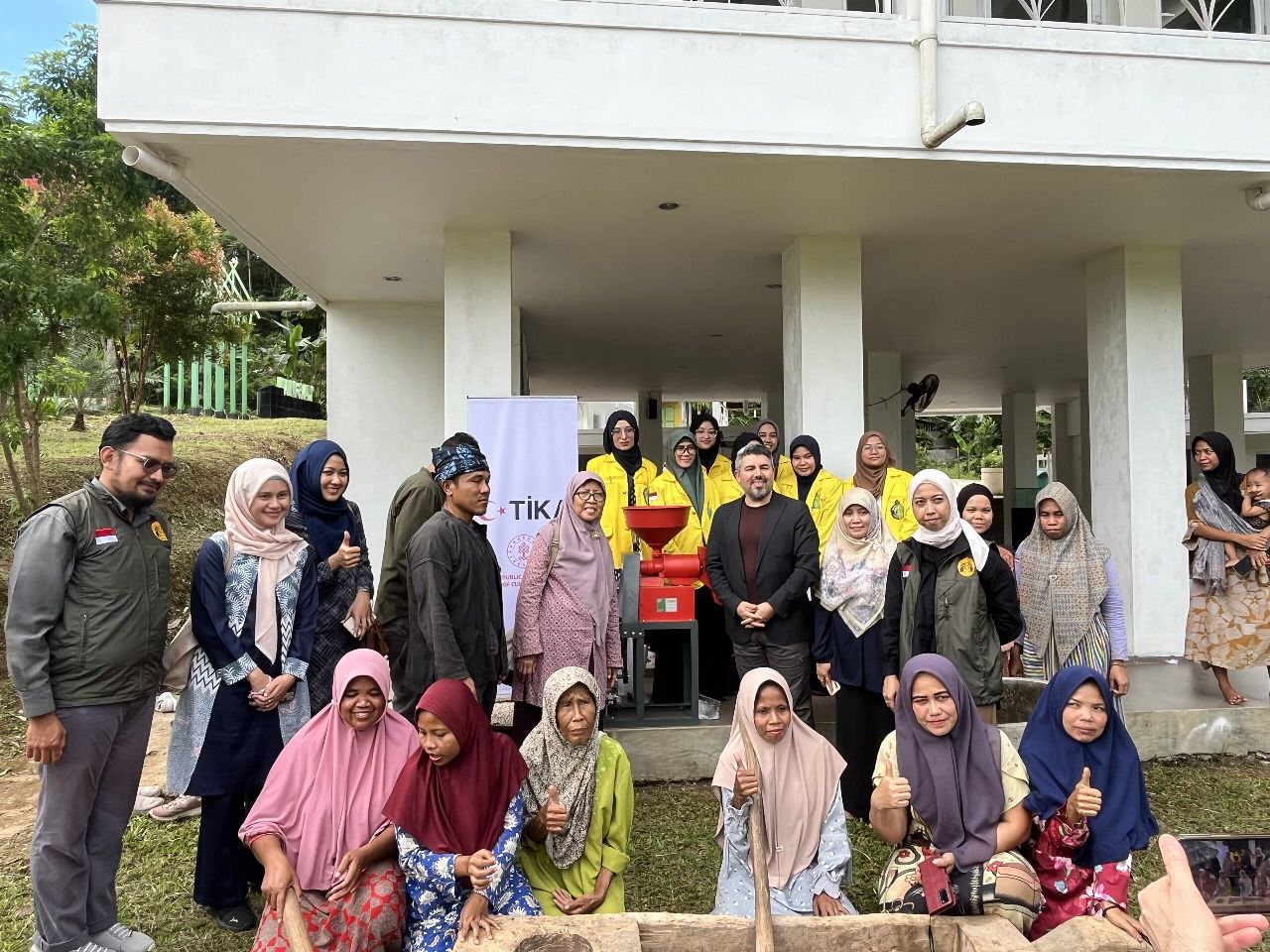“The museum is amazing because it features traditional dances related to rice. The Sanghyang Dedari dance is performed by young girls as a form of gratitude and a request for protection to the Goddess.” The statement was made by Isabella, a tourist from Poland who visited the Sanghyang Dedari Giri Amerta Museum in the Geriana Kauh Traditional Village, Duda Utara, Selat District, Karangasem Regency, Bali, on Wednesday, August 28.
She admired Balinese culture which has a close relationship with organic farming. The Sanghyang Dedari Dance is a sacred ritual in the rice planting process carried out by the Geriana Kauh indigenous community. This dance is performed as a form of prayer to the Goddess so that the rice plants are protected from pests and epidemics, so that the harvest is good.
Unfortunately, over time, this tradition has begun to be eroded by agricultural modernization. Farmers prefer to use chemical fertilizers and pesticides for faster planting results. In fact, the use of chemical fertilizers and pesticides damages the soil and the environment. Damaged soil conditions and expensive fertilizer prices force people to migrate and choose other professions.
“The more young people migrate, the more culture and tradition are abandoned. This made us realize that the Sanghyang Dedari ceremony taught by our ancestors not only builds trust in the Goddess, but also maintains the sustainability of the village,” said I Nyoman Subratha, the Village Head of Geriana Kauh Traditional Village.
Therefore, in an effort to revive the Sanghyang Dedari tradition in Geriana Kauh Traditional Village, Universitas Indonesia (UI) initiated a cultural preservation program in 2016 by establishing the Sanghyang Dedari Museum which was inaugurated in 2019. The Director of Community Service and Empowerment UI, Prof. Agung Waluyo, S.Kp., M.Sc., Ph.D., said that the establishment of this museum was the last effort that UI academics could make so that the Sanghyang Dedari tradition would not disappear.
“The driving force of Sanghyang Dedari is the agricultural industry. If farming activities here have decreased a lot, then what will be prayed for? Therefore, we built the Sanghyang Dedari Museum as the forerunner of the tourism industry in this place to preserve culture and revive the economy for an independent indigenous community,” said Prof. Agung.
According to him, Geriana Kauh can be developed into a tourist village because it has a lot of potential. The village located on the south side of Mount Agung has salak plantations, bamboo forests, coconut plantations, and banana and sugar palm plantations. The villagers also produce various crafts from stone, wood, and rattan; various culinary delights; and woven products with distinctive motifs. Specifically for agriculture, the Geriana Kauh community produces taun rice or masa rice which is a local Balinese rice variety with larger stalks and grains than other rice.
“This superior rice requires a longer planting time, which is around 190 days, compared to ordinary rice which only requires a harvest time of around 3-4 months. This advantage can be utilized by the community to build agrotourism in the village. For this reason, we must build a quintuple helix collaboration involving cultural observers, local government, private partners, media, traditional leaders, and youth organizations together,” said Prof. Agung.
To develop the Sanghyang Dedari Museum into a tourism industry, the UI Community Service Team collaborated with the Indonesian Museum Association to hold a museum management workshop attended by young people from Geriana Kauh Village. The Head of the UI Community Service Team who is a Lecturer at the UI Faculty of Humanities and also the Head of the Expert Council of the Indonesian Museum Association, Dr. Ali Akbar, S.S., M.Hum., said that this training was given to young people so that they have the awareness to maintain and inherit the museum.
According to Dr. Ali, the Sanghyang Dedari Museum is a type of community museum founded and managed by the local community, open to the public, inclusive, and offers various experiences for education, pleasure, reflection, and knowledge. Things that must be done in managing this museum are establishing an institutional structure and holding public programs that involve visitors to provide an interesting, informative, interactive, and educational experience.
“The challenge faced in managing this museum is that many young people in the village choose to migrate to work after graduating from school. Therefore, in this training, we encourage them to recognize what potential there is in Geriana Kauh that can be developed as agrotourism, as well as how branding strategies are carried out so that tourism in this village becomes better known,” said Dr. Ali.
I Wayan Agus Mahardika, a 12th-grade high school student who was a participant in the workshop, was happy because he gained new knowledge related to museum management. In the midst of his friends who are competing to migrate to the city, Martin, his nickname, aspires to become a professional guide who introduces the cultural wisdom of his region to visiting tourists.
“There are many interesting spots in this village that can be developed into tourist attractions, such as bamboo forests and rice fields with a very beautiful view of Mount Agung. If managed well, this tourism can be combined with a museum. Hopefully, in the future, this tourism can develop, and the Sanghyang Dedari Museum can be more advanced and become bigger, so that we do not need to migrate to find a living,” he said.
To maintain the sacredness of the Sanghyang Dedari Dance in Geriana Kauh Village, UI also initiated the digitalization of the museum to provide a virtual visiting experience. Visitors can access the page https://sanghyangdedari.org/ and follow the Instagram account @wisatadesadedari to get the latest information regarding tourism activities and celebrations in the village.



